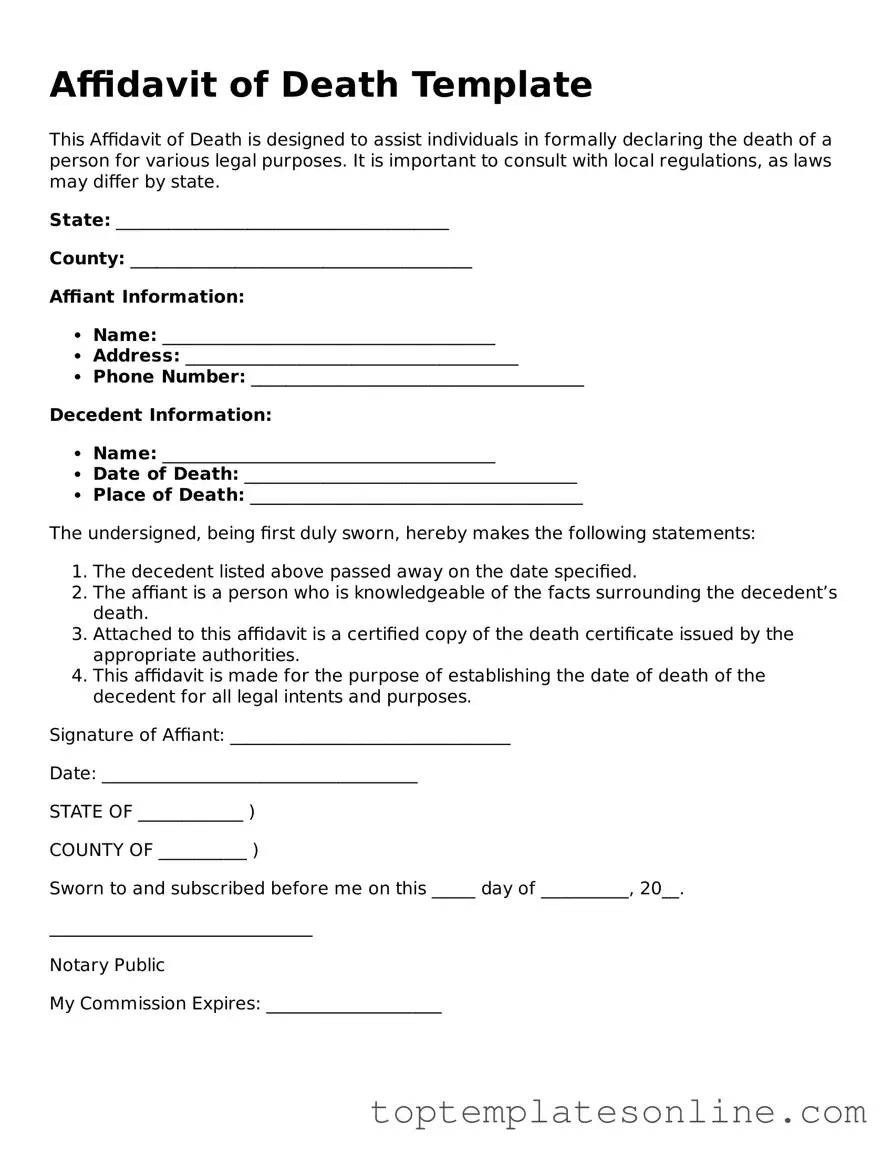Attorney-Approved Affidavit of Death Form
The Affidavit of Death form is a legal document used to officially declare the death of an individual. This form serves as a crucial tool in settling the deceased's affairs, including the distribution of assets and handling of debts. Understanding how to complete and file this form can simplify the process for family members and executors during a challenging time.
Customize Affidavit of Death Here
